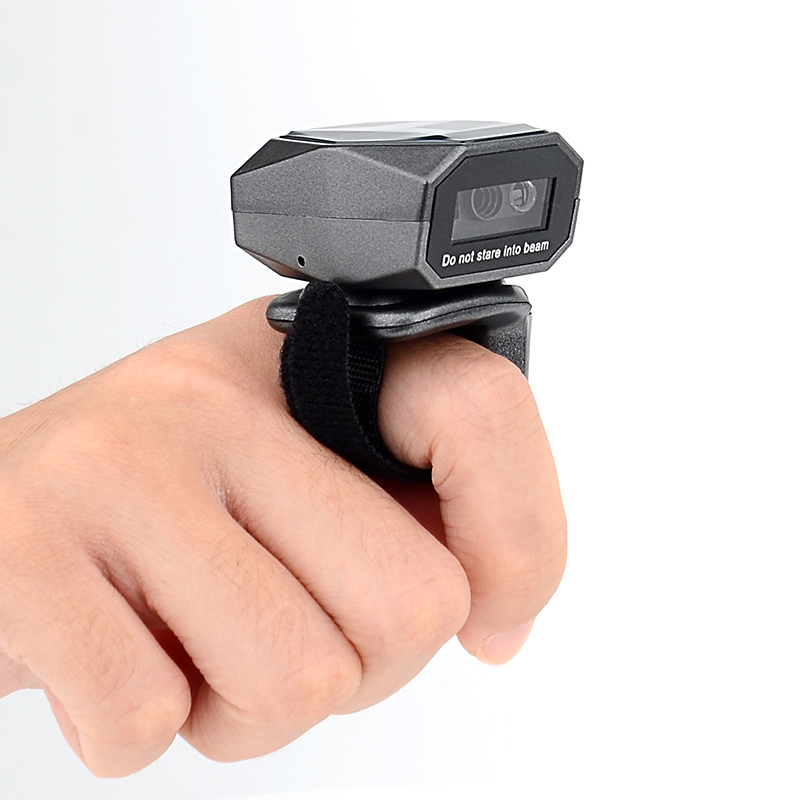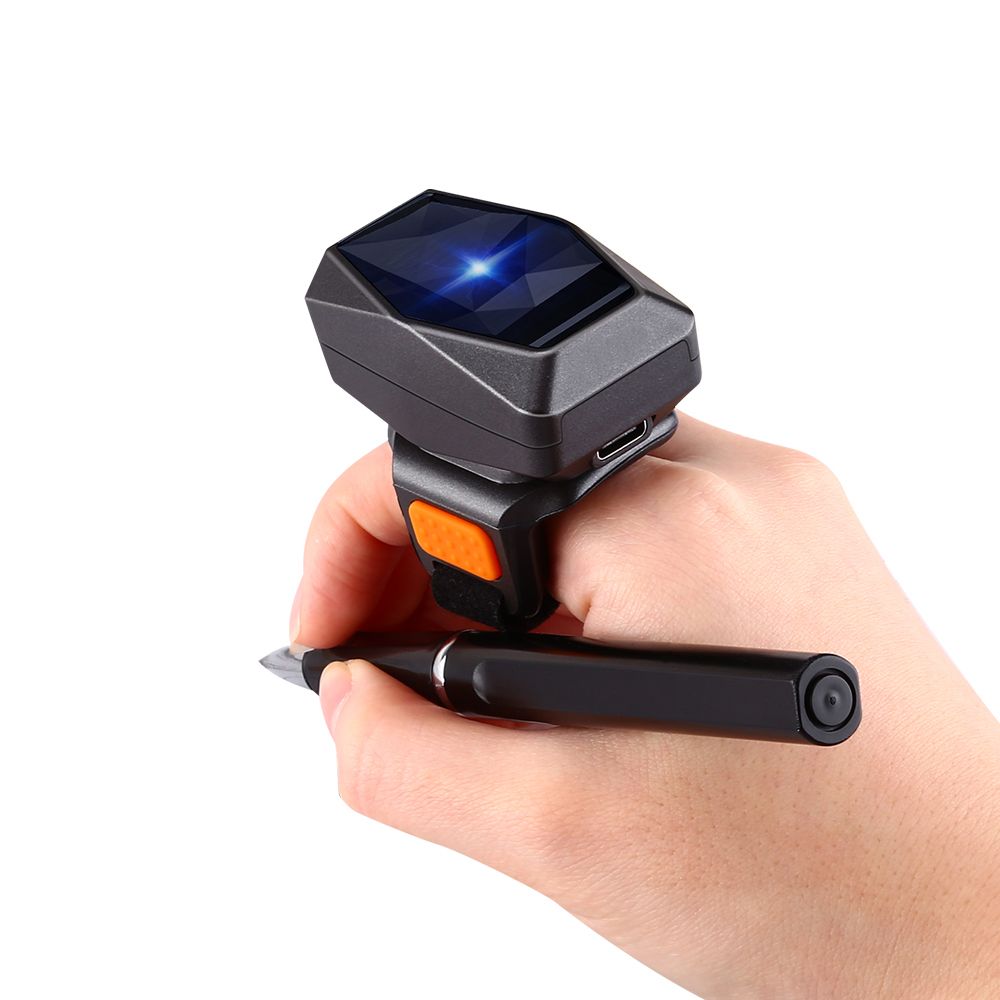In the era of advanced technology, wearable devices are transforming the way industries operate, enhancing efficiency, and improving workflows. One such inventive technology is a wearable barcode scanner. This article delves into more about wearable barcode scanners.
Introduction To Wearable Barcode Scanners
What Is A Wearable Barcode Scanner?
A wearable barcode scanner is a hands-free device designed to scan barcodes. Wearable scanners, as opposed to traditional handheld scanners, are often worn on the wrist, fingers, or forearms, allowing users to accomplish tasks without the need to pick up and put down the scanner. These devices streamline operations by enabling continuous scanning and data collection, significantly boosting productivity in various industries.
Evolution Of Barcode Scanning Technology
Barcode scanning technology has evolved significantly since its inception in the 1970s. Initially, barcode scanners were bulky and stationary, limiting their use to specific locations. Handheld scanners gradually evolved, enabling greater mobility. The most recent breakthrough in this technology is the wearable barcode scanner, which provides unmatched ease and efficiency.
Components Of A Wearable Barcode Scanner
Core Hardware Components
Scanner Module
The scanner module is the heart of the device, responsible for reading barcode information. It typically includes a laser or imaging sensor that captures the barcode data. The choice between laser and imaging technology depends on the application and type of barcodes being scanned.
Processor And Memory
Wearable barcode scanners include processors and memory for processing and storing scanned data. The processor handles the decoding of barcode information, while the memory stores the data temporarily before it is transmitted to a central system.

Supermarket Wireless 2D Wearable Finger Barcode Reader
Battery
A robust battery is crucial for the continuous operation of wearable barcode scanners. These devices are designed to last through long shifts, ensuring minimal downtime for recharging.
Connectivity Features
Wireless Communication
Wearable barcode scanners often use wireless communication technologies such as Bluetooth, Wi-Fi, or RFID to transmit data to a central system or mobile device. This wireless capability eliminates the need for physical connections, enhancing mobility and convenience.
Integration With Other Devices
These scanners can integrate with other devices like smartphones, tablets, or warehouse management systems (WMS). This link enables real-time data synchronization and efficient inventory management.
Ergonomic Design
Comfort And Usability
Wearable barcode scanners are designed with ergonomics in mind, ensuring they are comfortable to wear for extended periods. The design minimizes strain on the user, promoting ease of use and reducing fatigue.
Durability
Given their use in demanding environments, these scanners are built to withstand harsh conditions. They are often ruggedized to resist impacts, dust, and moisture, ensuring longevity and reliability.
How Do Wearable Barcode Scanners Work?
Scanning Process
Capturing The Barcode
When a barcode is within the scanner's range, the device emits a laser or captures an image of the barcode. The reflected light or image is then analyzed to decode the information encoded in the barcode.

Efficient Warehouse Wearable Barcode Scanner
Decoding The Data
The processor in the wearable scanner decodes the captured data, converting it into a digital format. Product descriptions, inventory figures, and tracking information are common examples of this type of data.
Data Transmission
Real-Time Data Transfer
Once decoded, the data is transmitted wirelessly to a central system or device. This real-time transfer ensures that inventory levels, product locations, and other critical data are updated instantly.
Integration With Software Systems
The transmitted data can be integrated with various software systems such as WMS, ERP (Enterprise Resource Planning), or CRM (Customer Relationship Management). This integration facilitates seamless data flow across different departments and systems.
Benefits Of Wearable Barcode Scanners
Increased Efficiency
Hands-Free Operation
The primary advantage of wearable barcode scanners is the hands-free operation. Workers can scan barcodes while freeing up their hands to perform other duties, dramatically speeding up procedures and lowering scanning time.
Faster Data Collection
Wearable scanners enable continuous data collection without the need to stop and handle a traditional scanner. This constant data flow enhances productivity and minimizes disruptions in workflows.
Enhanced Accuracy
Reduced Human Error
Wearable barcode scanners reduce the risk of human error associated with manual data entry. The automatic scanning and real-time data transfer ensure that information is captured accurately and consistently.

Logistics Friendly Wearable Reader
Improved Inventory Management
Accurate data collection and real-time updates improve inventory management. Companies can carefully track stock levels, limiting the possibility of overstocking or stockouts while optimizing inventory turnover.
Better Worker Safety And Comfort
Ergonomic Design
The ergonomic design of wearable scanners minimizes physical strain on workers. This design not only enhances comfort but also contributes to worker safety by reducing the risk of repetitive strain injuries.
Mobility And Flexibility
The hands-free nature of wearable scanners allows workers to move freely and perform their tasks without hindrance. This mobility is particularly beneficial in large warehouses or production facilities where workers need to cover significant distances.
Conclusion
Wearable barcode scanners represent a significant leap in barcode scanning technology, offering unparalleled convenience, efficiency, and accuracy. As technology advances, the capabilities and applications of wearable barcode scanners will expand, revolutionizing how businesses function and increasing overall productivity.
